NORWEGIAN CULTURE:
How to socially distance like a Norwegian
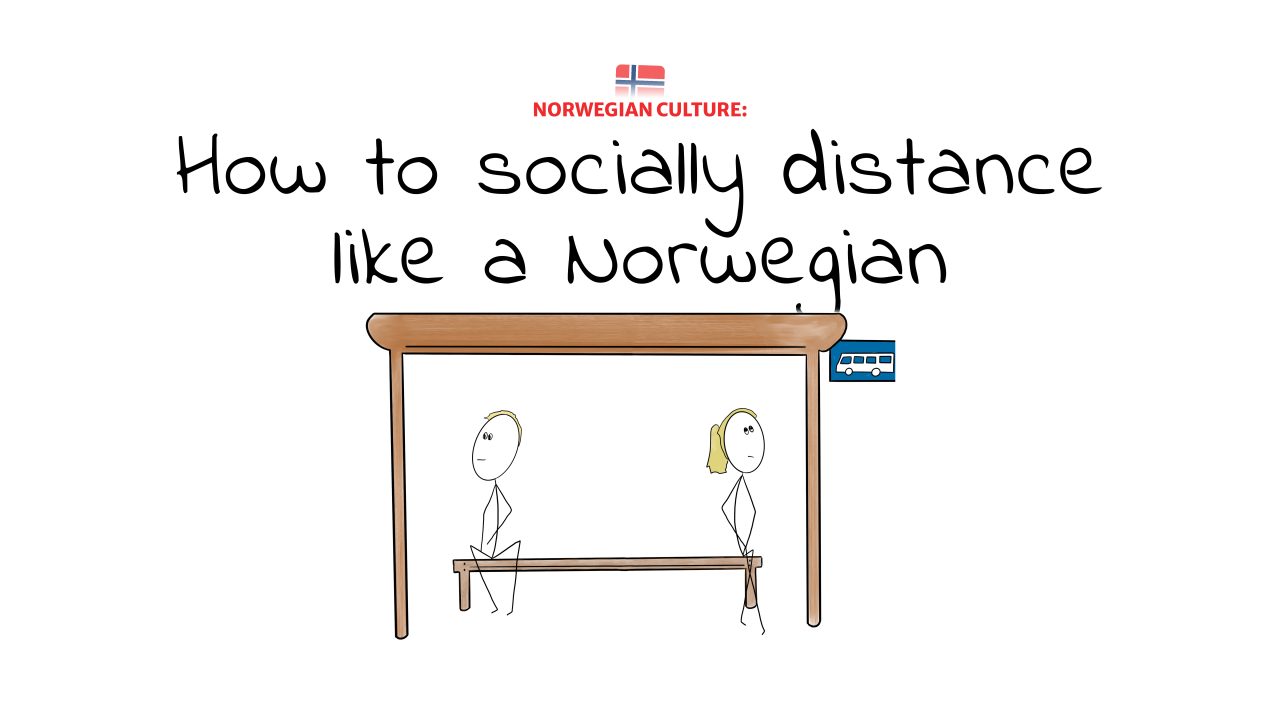
Social distancing in a bus shed. Two people sitting on either side of a bench facing away from each other.
Norwegian distance
Like every society, Norwegian society has its own traditions, rituals and social codes. Understanding these codes will tell you a lot about Norwegians and how they differ from the rest of the world. How to greet others, the distance you should keep during social interactions, the meaning of hand gestures, eye contact, and different signs of politeness are examples of such social codes.
Understanding social codes is the first step to interacting easily with other cultures and becoming more aware of our own culture.
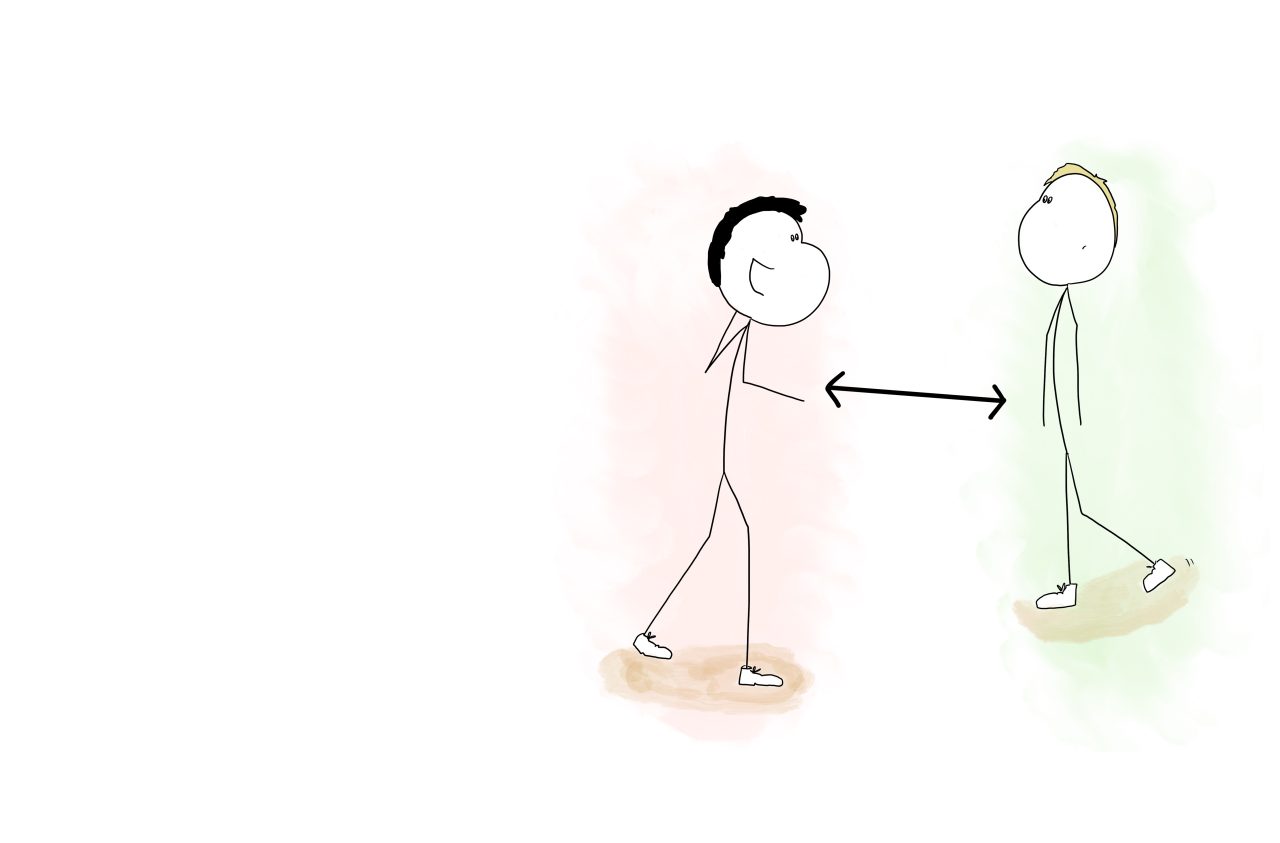
Two people meeting getting ready to greet while keeping a clear distance.
Greetings
In Spain, like many other places in the world, you greet people when arriving at work, when leaving an event, when entering a shop. People turn around and greet you back, often with a smile.
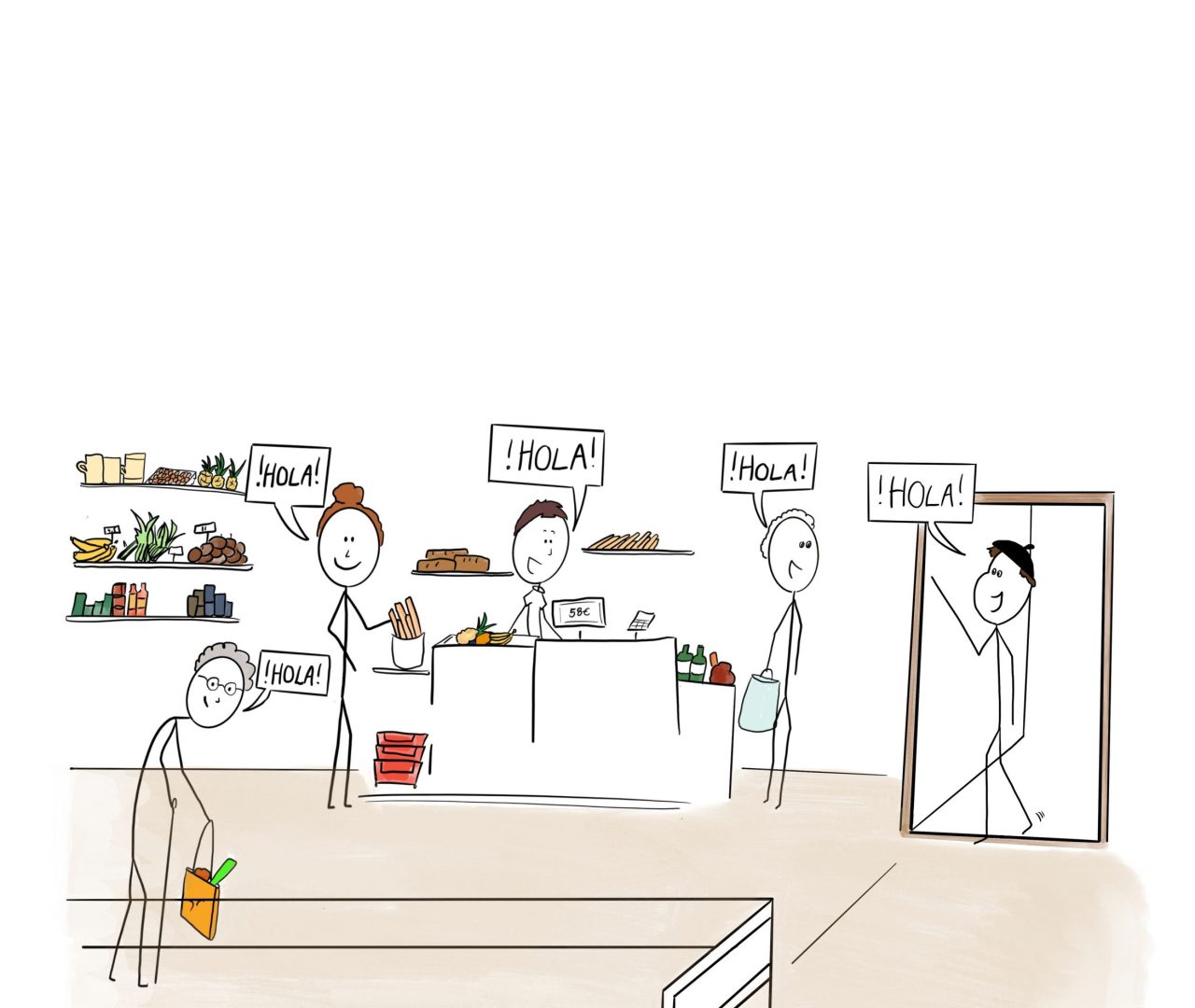
Person entering a grocery store saying Hola! All the other customers greet him by replying Hola!
In Norway, it works a little bit differently.
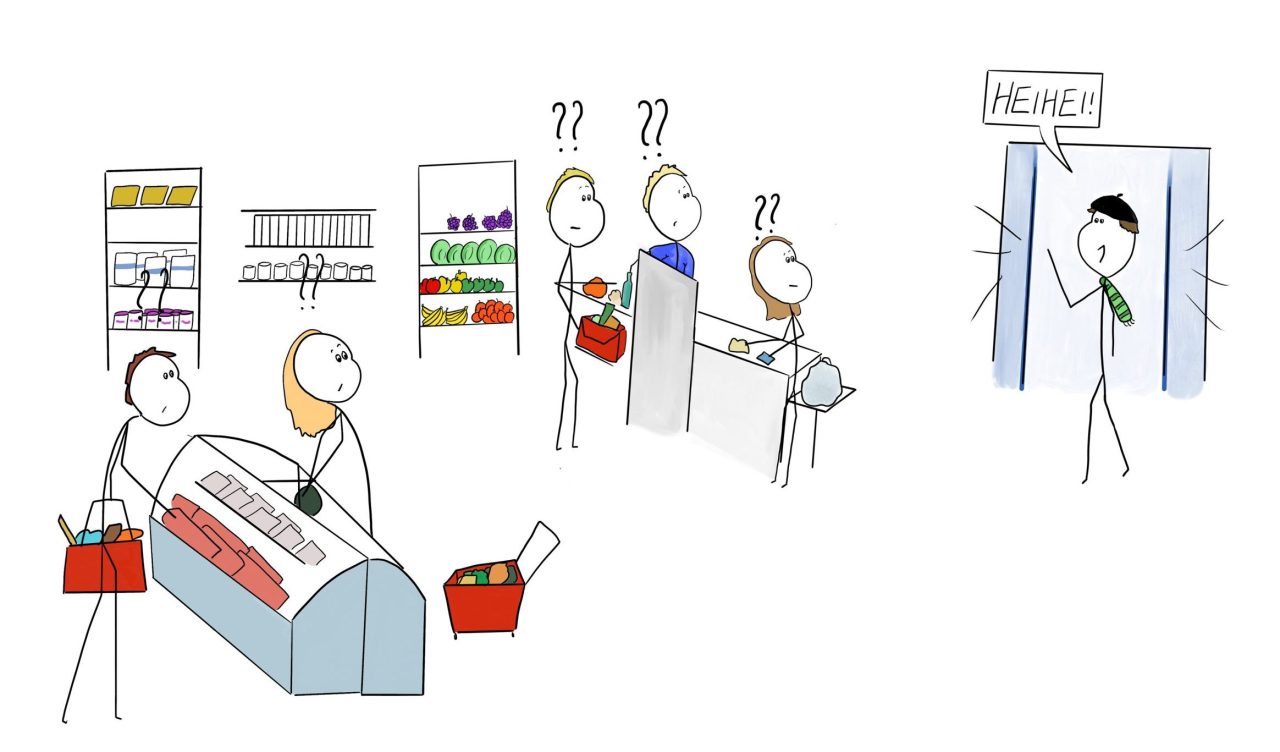
Person entering a Norwegian grocery store saying Hei hei! The other customers look confused as to why he greets them.
The meaning of Norwegian greetings
You greet someone when there is a practical reason to do so. If you have something to discuss, if you want to start a conversation, if you need help. If your colleagues leave without saying goodbye in the afternoon they do not intend to be rude. They are in fact very polite – Norwegian polite.
They do not want to disturb you.
Keep in mind that social norms are different in Norway.
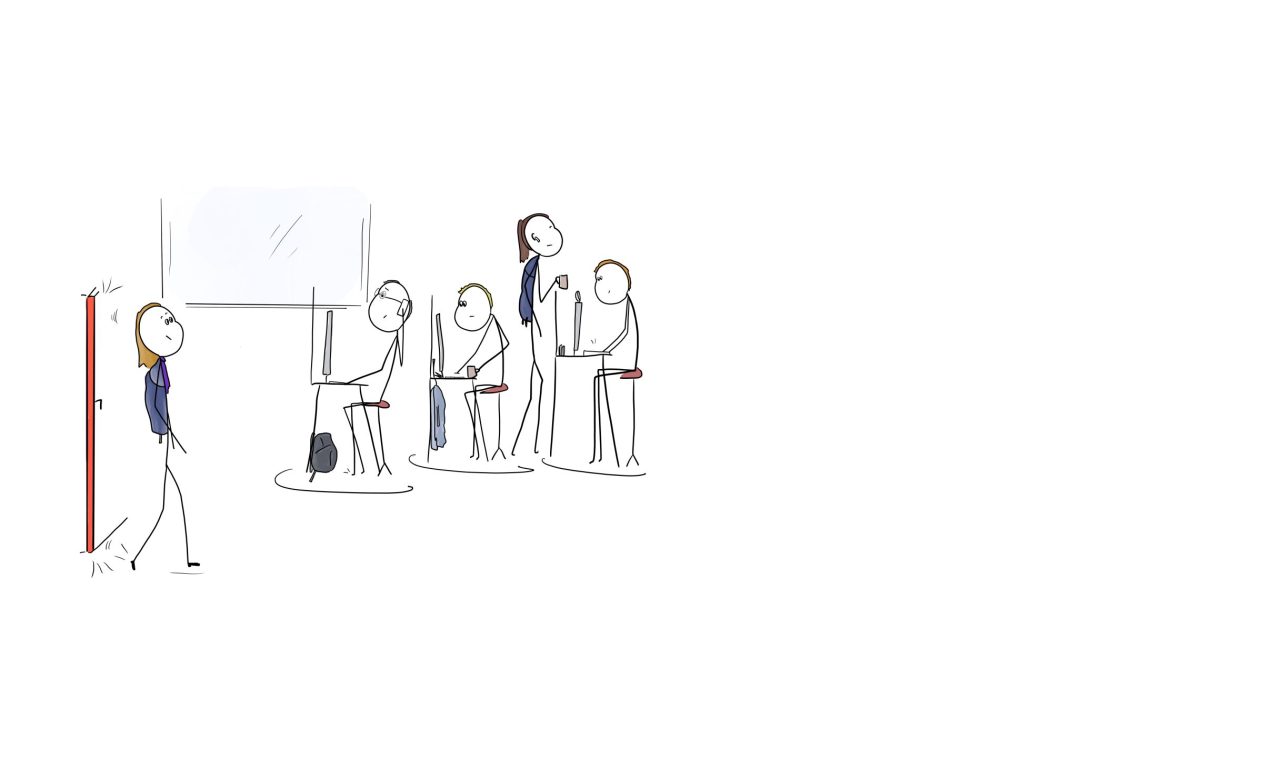
Person coming to work in an office. None of the people working there pay any attention to him.
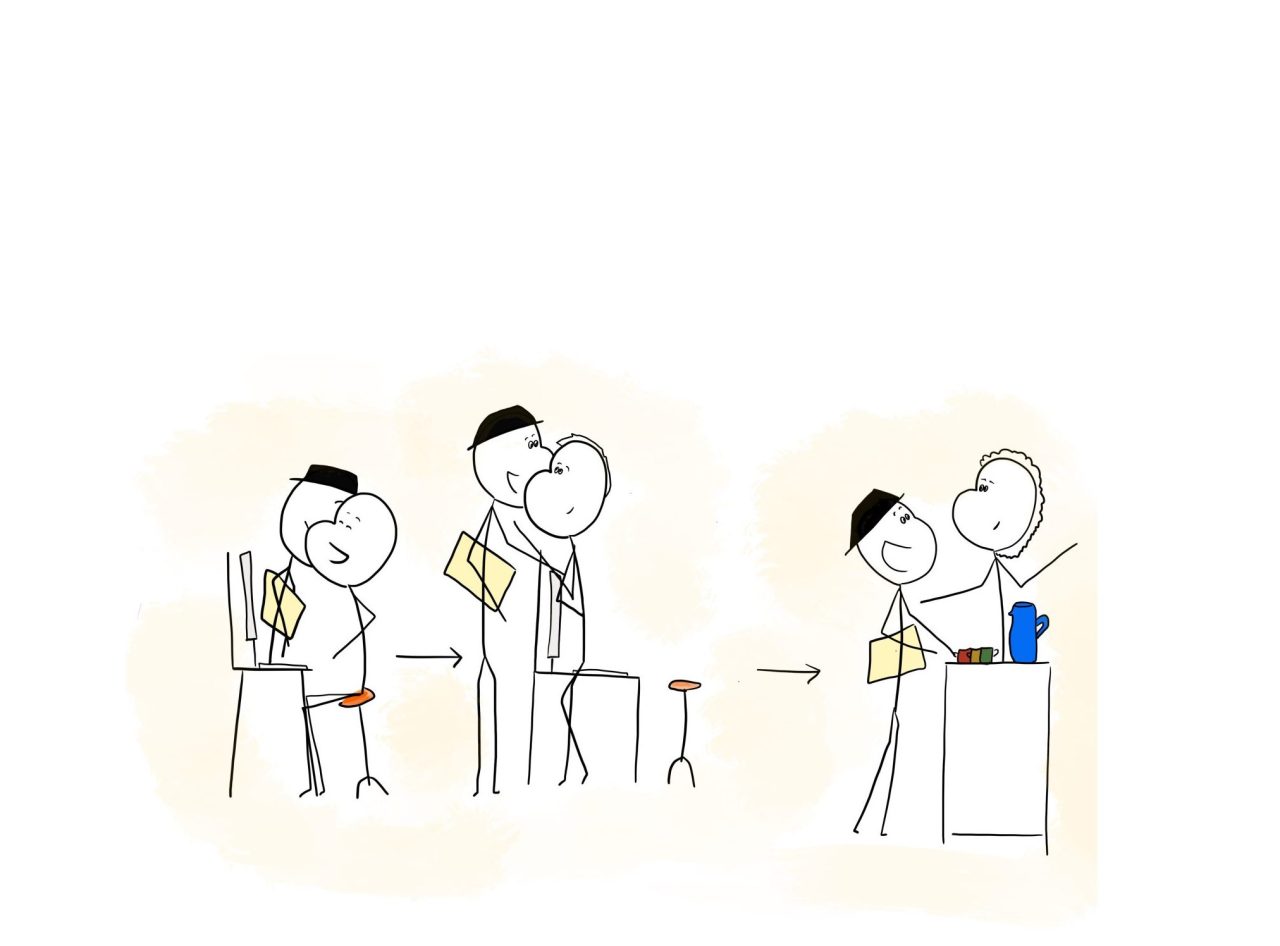
Person going through an office greeting every colleague with a hug and a chat.
Don’t be surprised if your Norwegian neighbour passes just in front of you without looking at you, without greeting you. As if you did not exist. As if you were invisible. He is neither rude nor impolite. He is actually very polite. He does not want to disturb you.
He will talk to you if there is a practical reason to do so. If something is wrong with the garden, if he is unhappy with something. If your neighbours, colleagues and acquaintances do not greet you and small talk,
It does not mean that they do not like you.
They are just trying to be polite. Norwegian polite. If you meet in another setting where there is a reason to speak, like “syden” or at “marka”, it will provide a comfortable framework and a practical reason to speak to you.
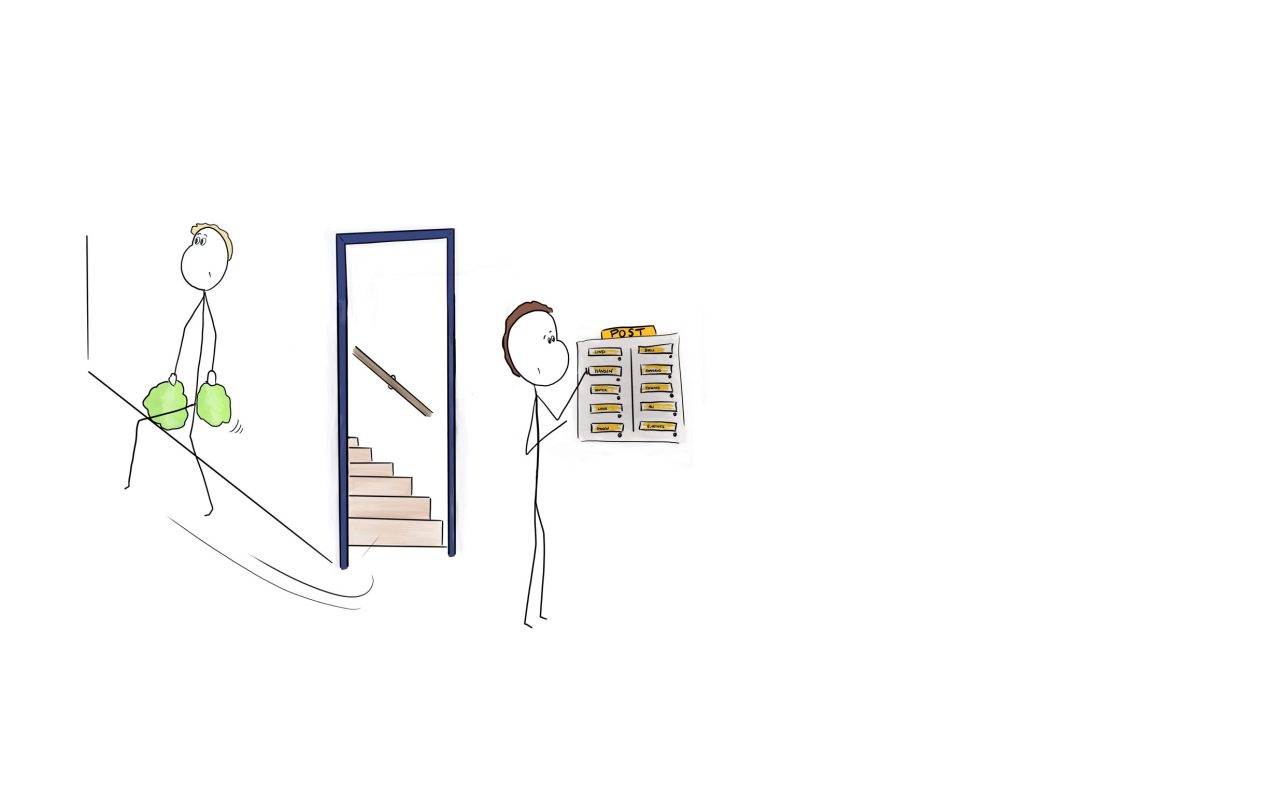
A person checking the mailbox in a hallway while a neighbor rushes by to avoid saying hello.
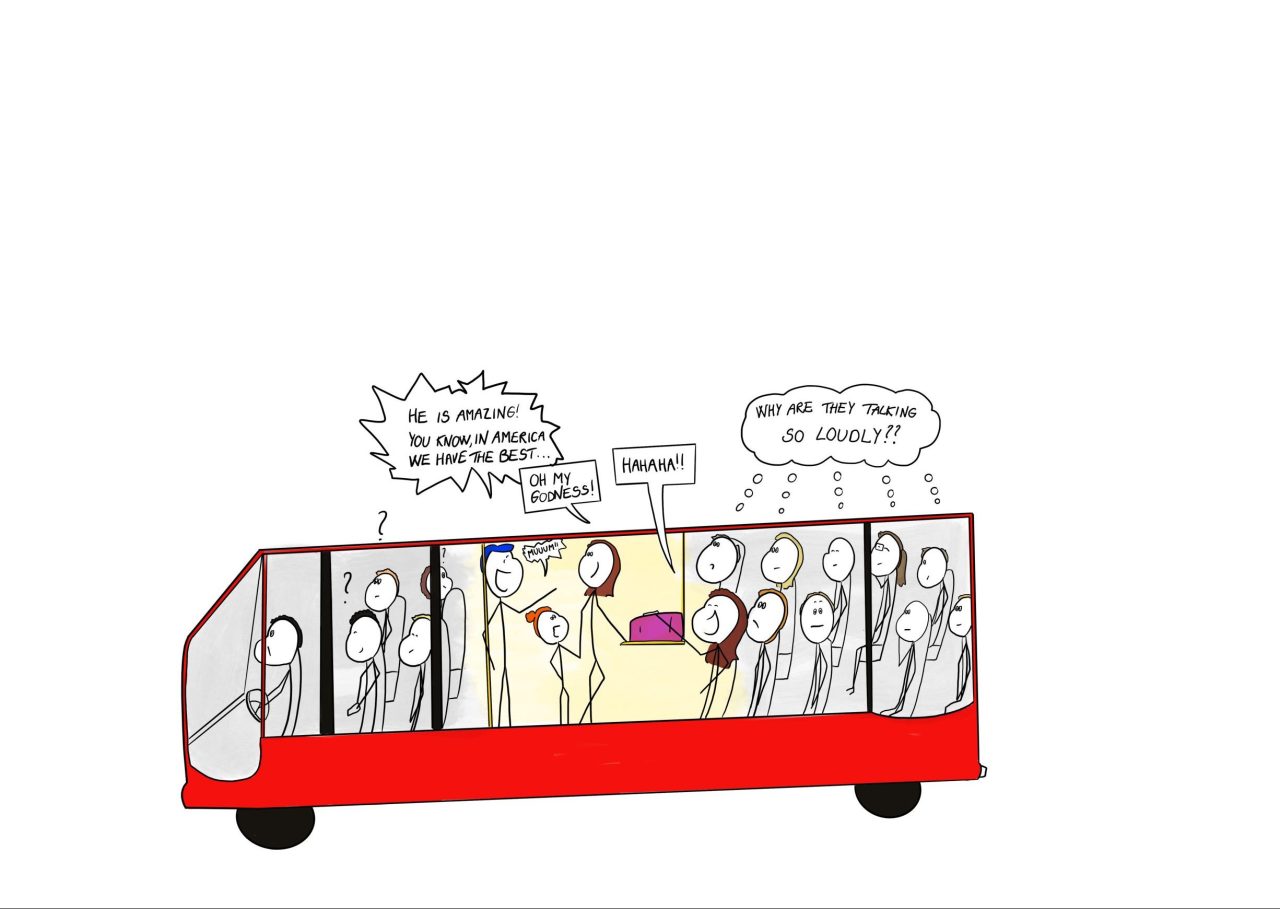
A group of Americans talking and laughing out loud on a crowded bus. Norwegians sitting quietly thinking "Why are they talking so loudly?"
Being alone
Norwegians find ways to be alone. They value their personal space as much as their opportunities to be alone. They will travel to work alone rather than organise to commute with colleagues. It is more efficient and practical.
And you do not need to talk to anyone.
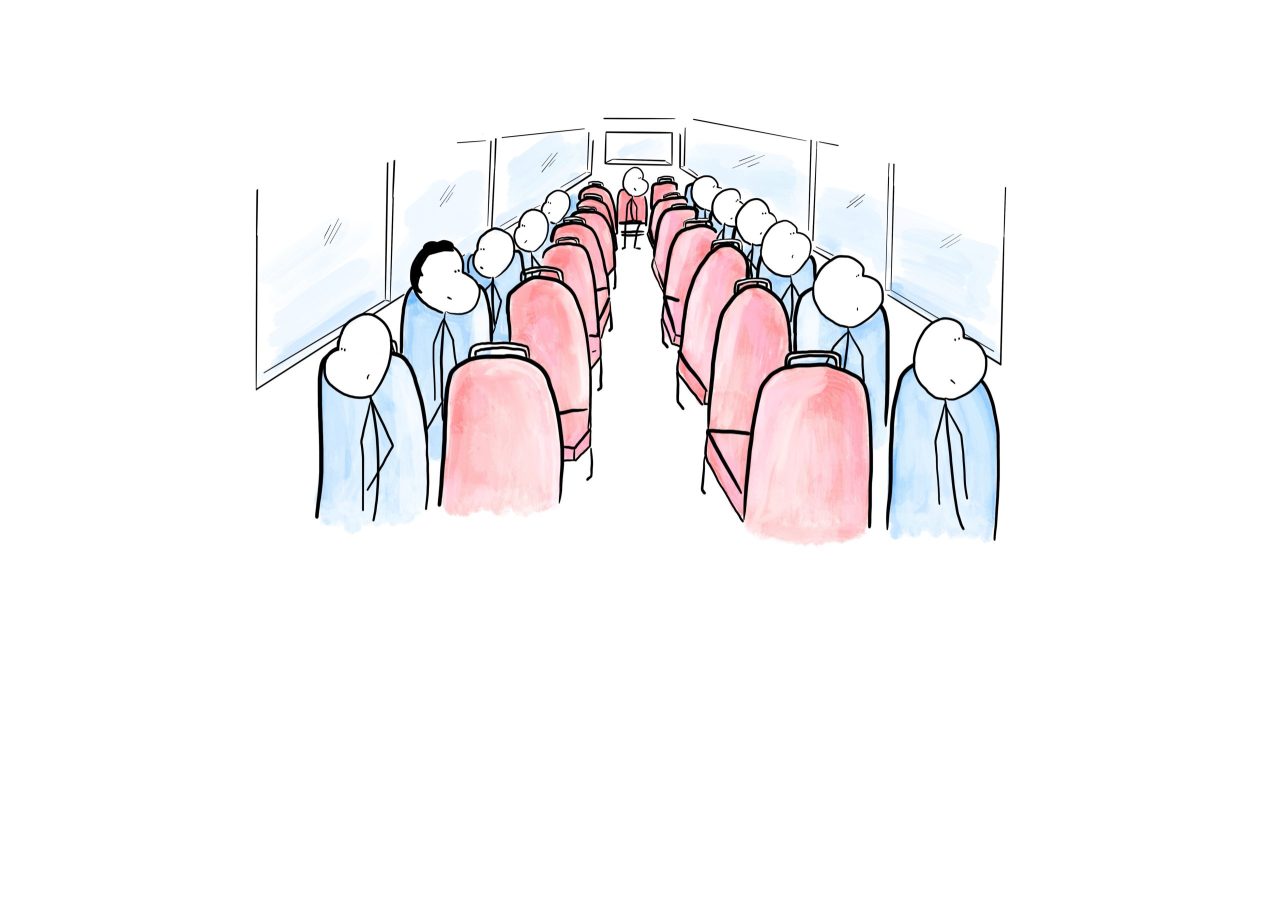
A bus where all the window seats are taken. Nobody sits next to each other.
They also eat alone. You do not need to talk. It is a practical and efficient way to feed oneself quickly. You can then go home early, or go work out, alone.
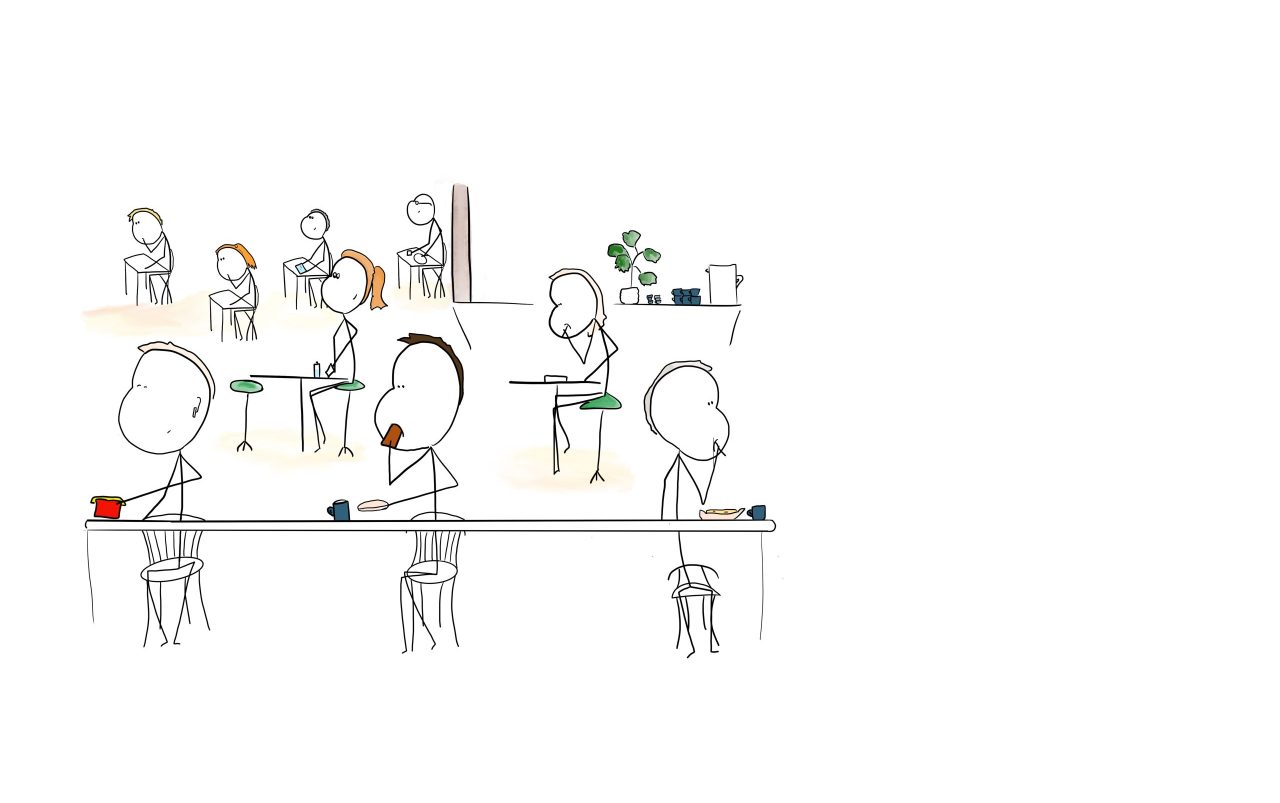
Several people eating separately in a cafeteria. Nobody talks to each other.
Personal space
This is when you know that a
Norwegian bus stop is full,
And that you need to stand.
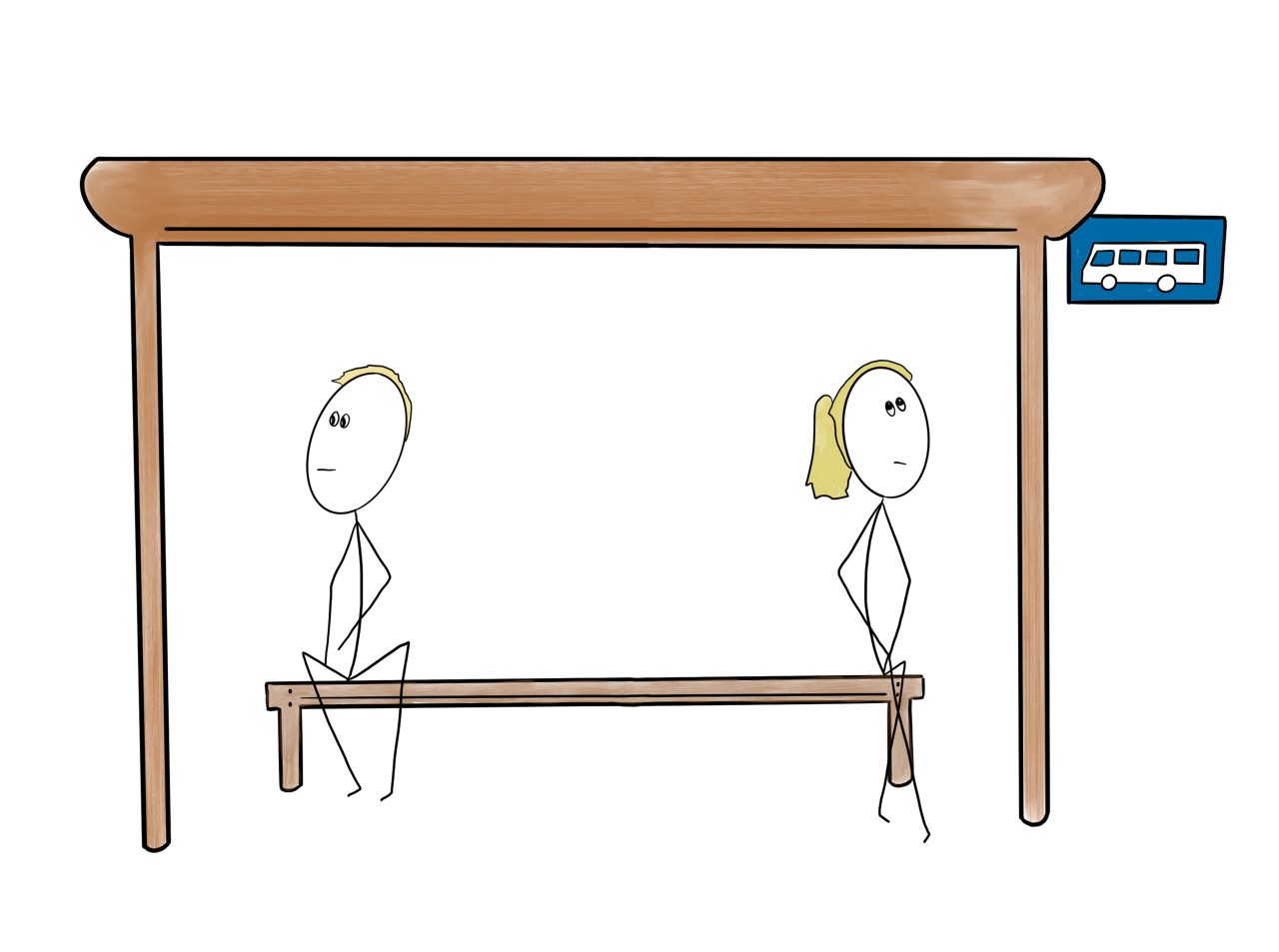
Social distancing in a bus shed. Two people sitting on either side of a bench facing away from each other.
Actually this is just part of the picture.
Norwegians love their personal space.
Make sure to leave space when standing as well.
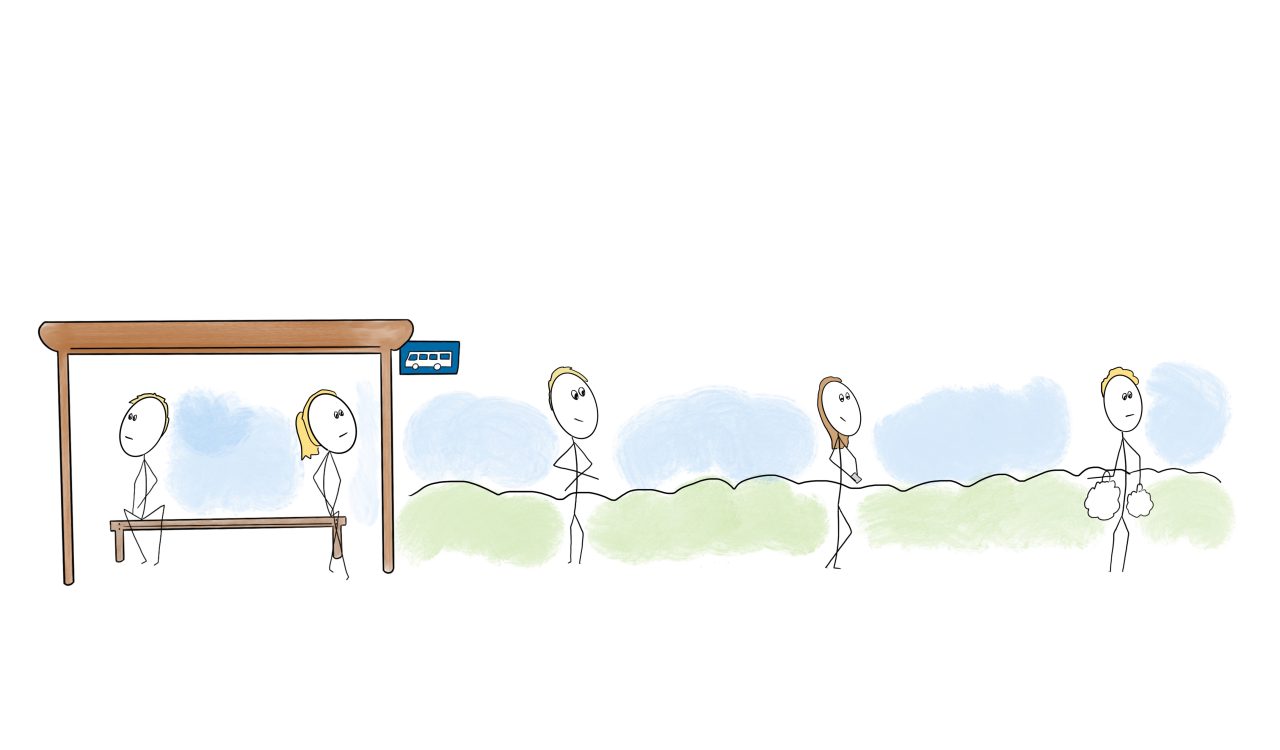
Social distancing in a bus shed. Two people sitting on either side of a bench facing away from each other. Several people waiting for the bus outside the shed with a significant distance between each.
Need for space
Norwegians need space. A lot of space. When abroad you can spot them easily. They do not want to disturb others. They leave space. Do not stand too close, Do not touch.
Norwegians need both physical
and psychological space.
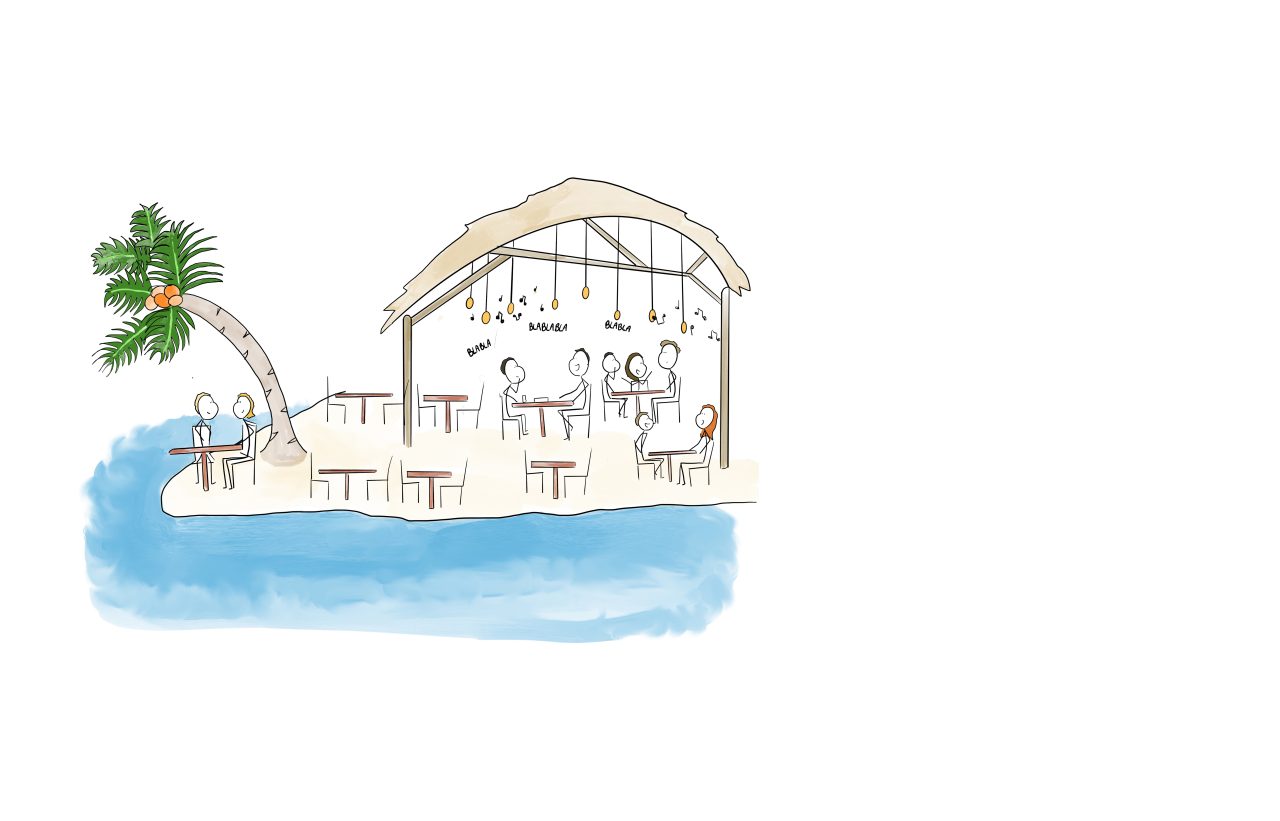
A beachside restaurant. Several people are talking and laughing inside. One couple is sitting alone outside under a palm tree.
Feeling comfortable
Norwegians need two things in order to feel comfortable communicating with others;
A reason to speak and an opportunity to escape.
When Norwegians have the possibility to escape they feel safe, they greet others, they small talk for no reason.
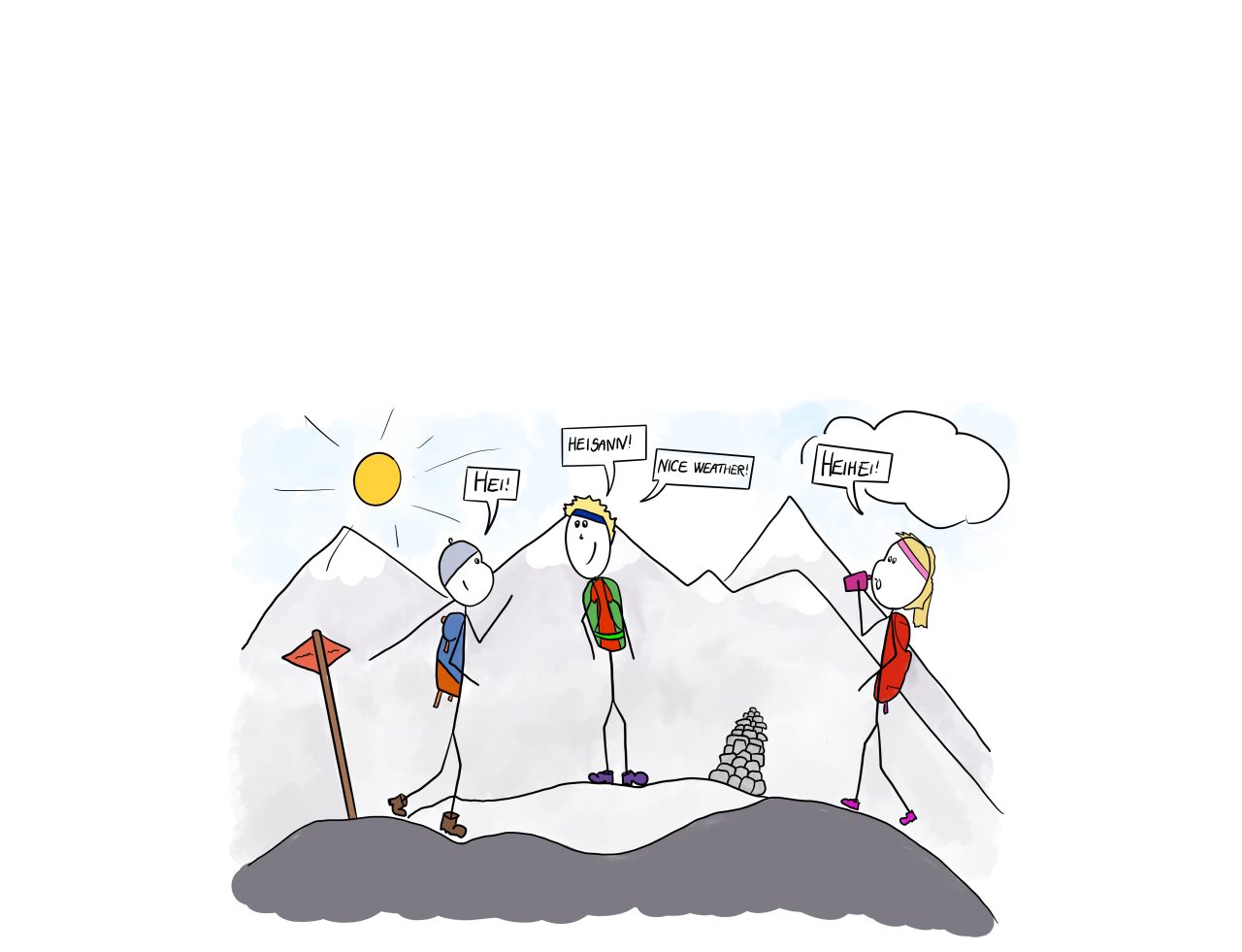
Three random people greeting each other and smiling while hiking in the mountain.
The opposite of this one of the most awkward places I have experienced. A Norwegian elevator. You feel a heavy atmosphere. Do not greet anyone.
Do not talk. Do not look at other people. Do not smile. It will just make things worse. In an elevator you are missing both the frame and the opportunity to escape.
It is a very uncomfortable place for Norwegians.
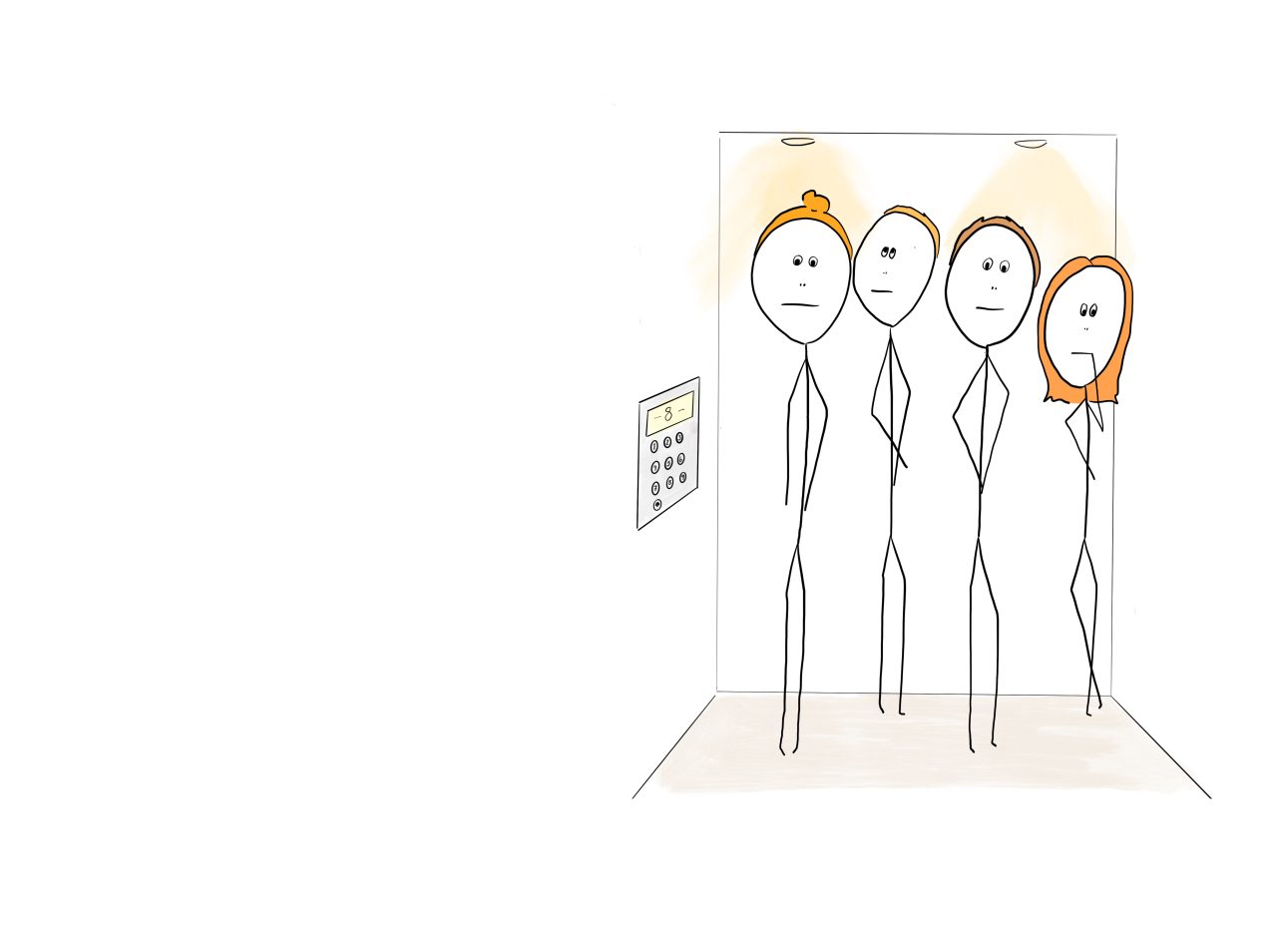
Four people in an elevator. Not talking and looking uncomfortable.
Norwegian conversations
In Norway conversations are direct, simple and pragmatic. Unframed discussions are not a common means of getting to know people.
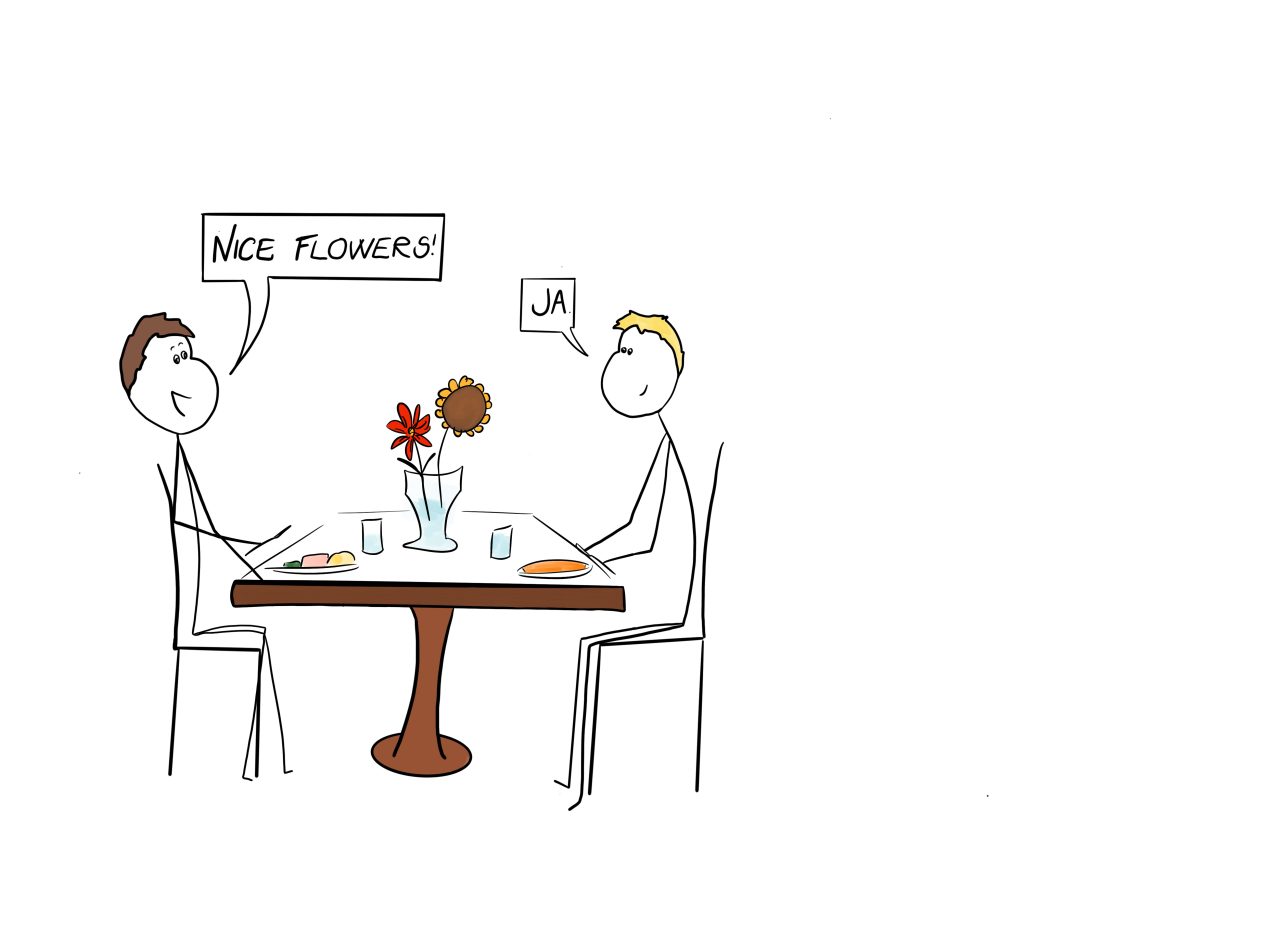
Two people sitting at a table. One person says; Nice flowers! The other person replies; Ja.
You get curious and invite this new acquaintance for dinner at your place. You get to know each other around food. You connect intellectually.
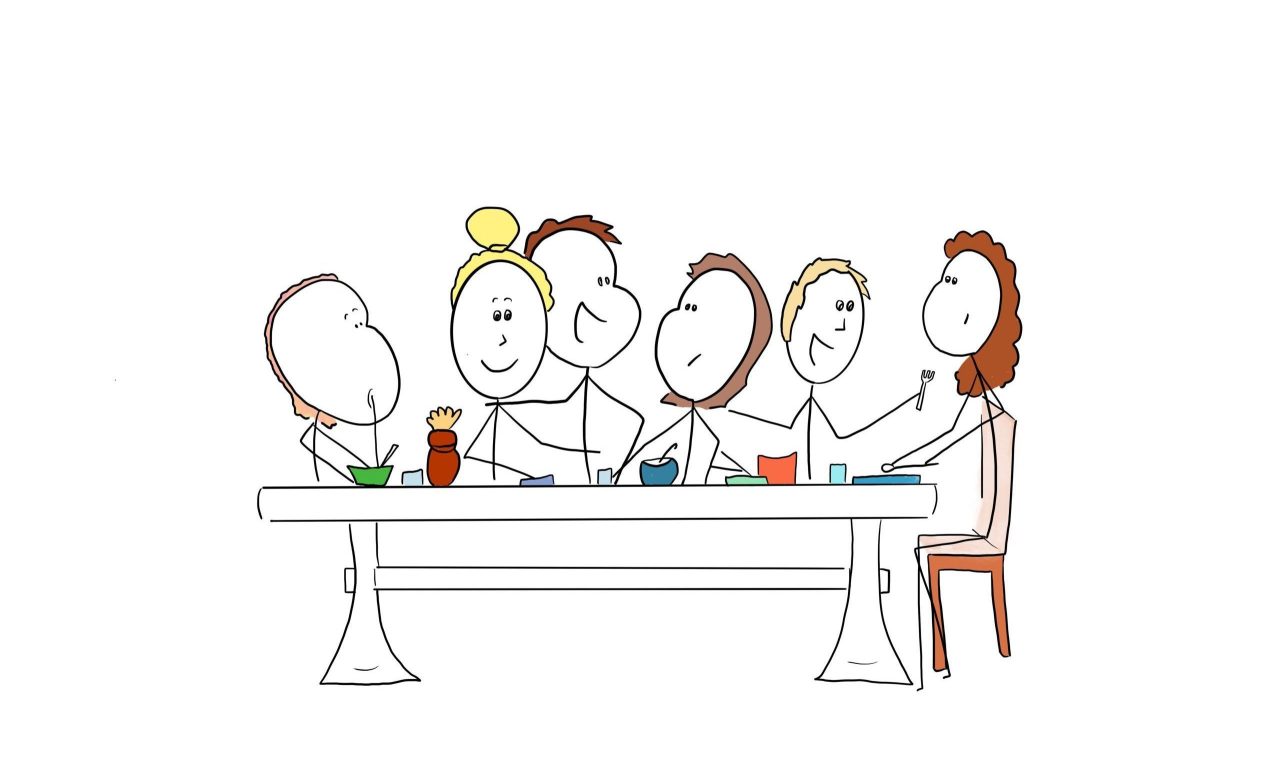
Six people sitting around a table talking and having dinner.
You organise an activity. You go berry picking.
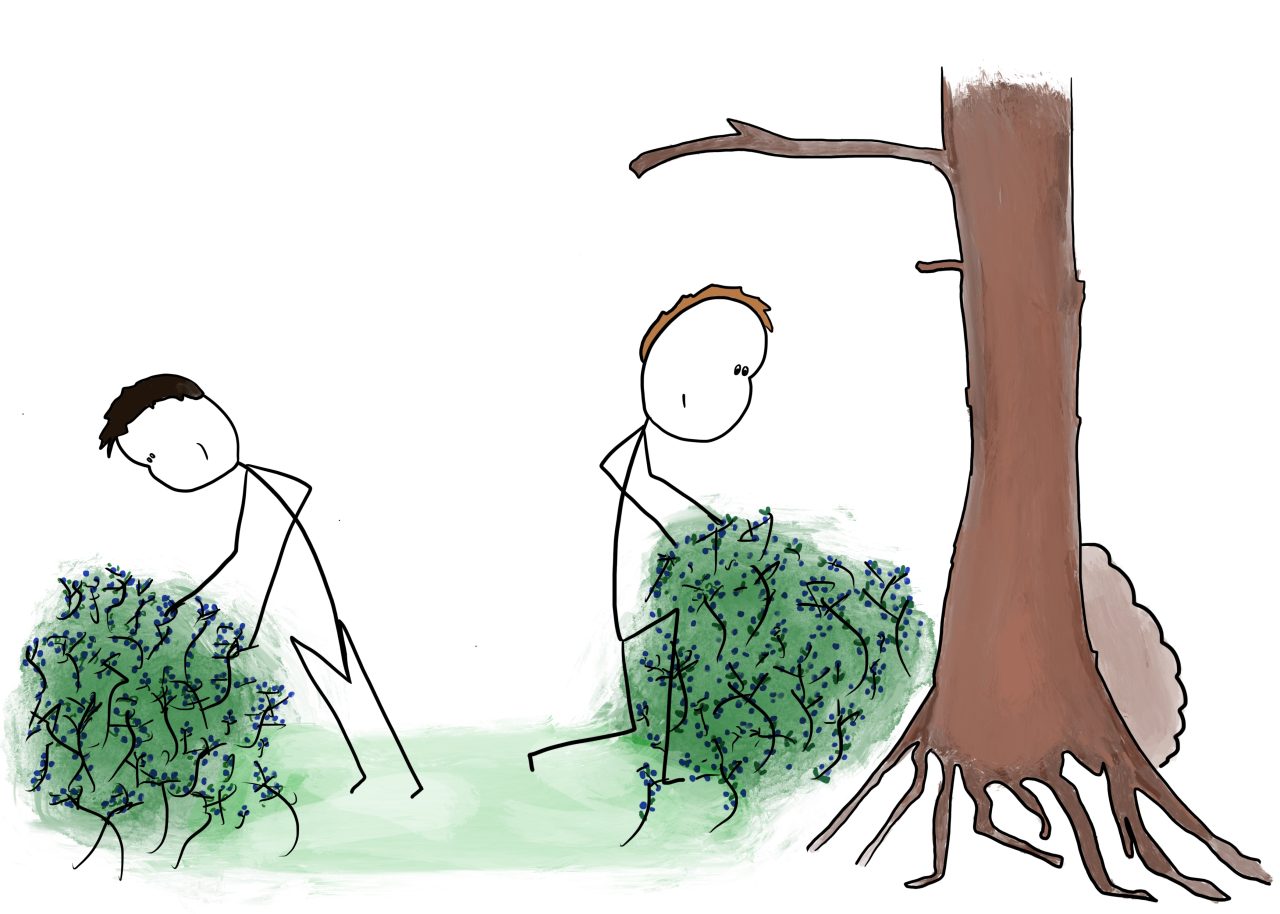
Two people picking blueberries from separate bushes in the forrest.
Purposeful activities follow from interesting conversations and a curiosity for getting to know people.
This is the typical timeline.
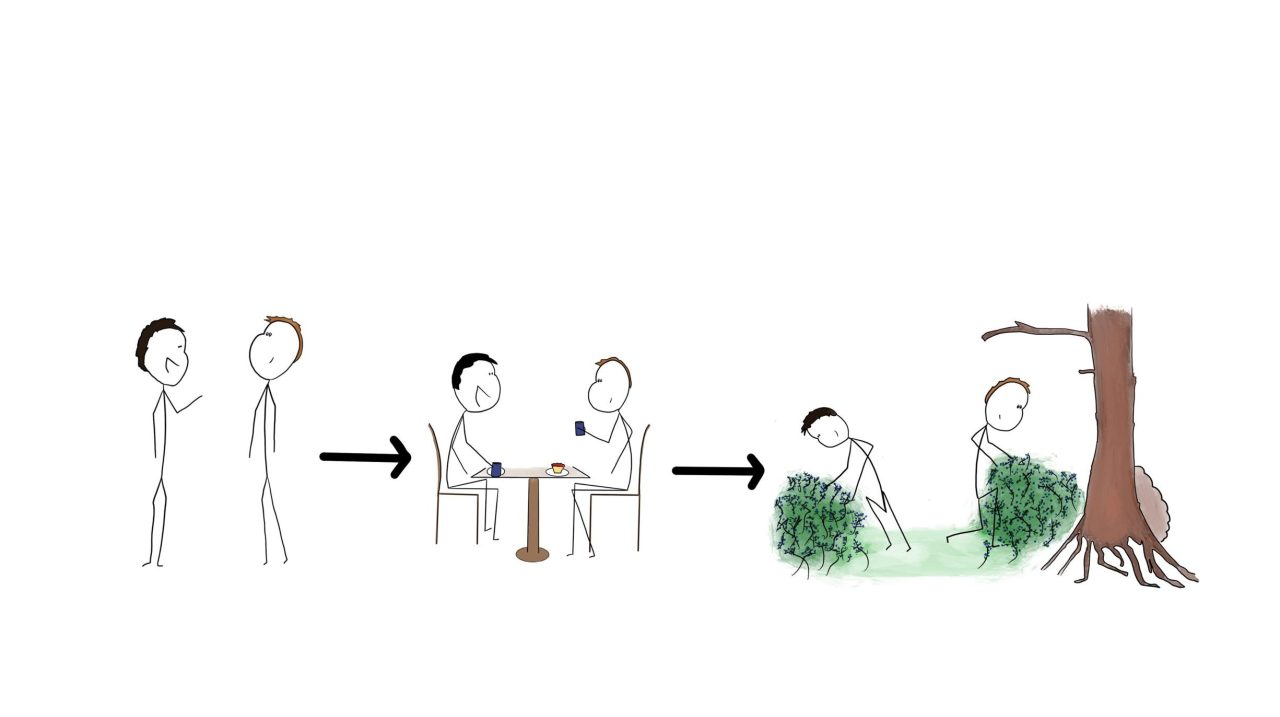
A timeline where someone meets and starts talking, go on to share a meal and then go on to pick blueberries together.
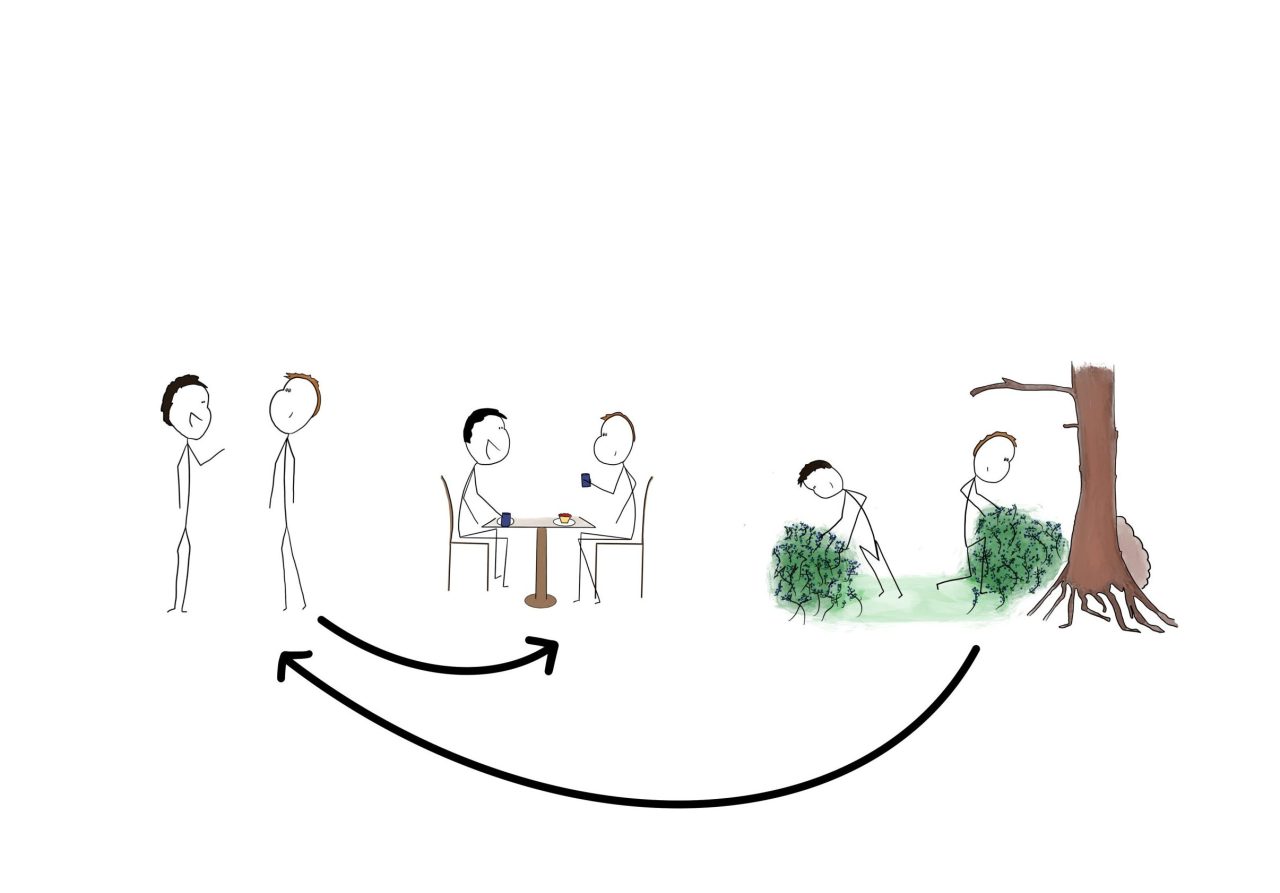
A timeline showing someone picking blueberries together, moving on to talking with each other and end up sharing a meal.
In Norway, dinners are not a means of getting to know people. They are a result of an established relationship.
This is the key to understanding the Norwegian socialisation logic.
Do not invite a Norwegian you just met to share a meal, you may never see him again.
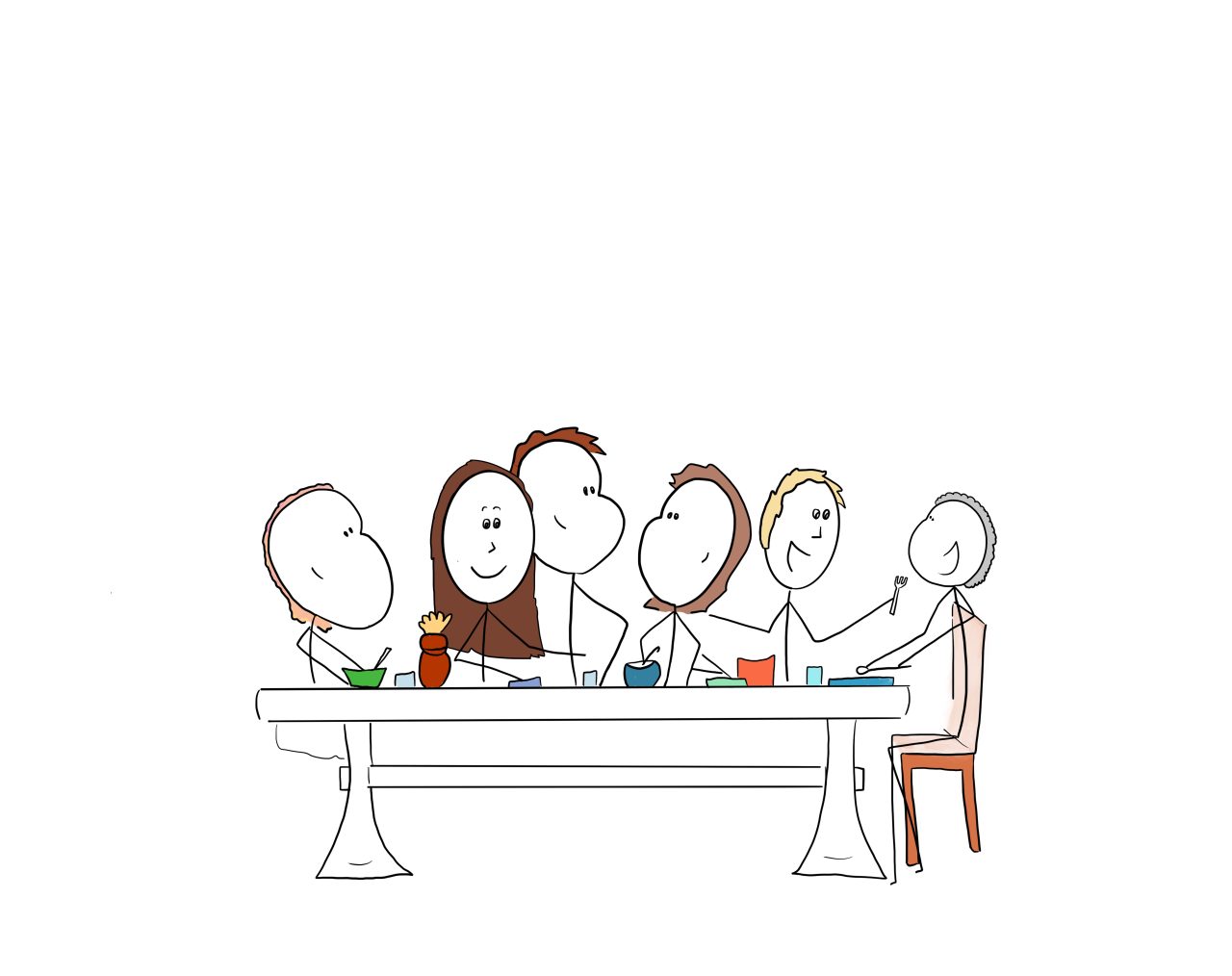
Six people sitting around a dinner table, talking and enjoying themselves.
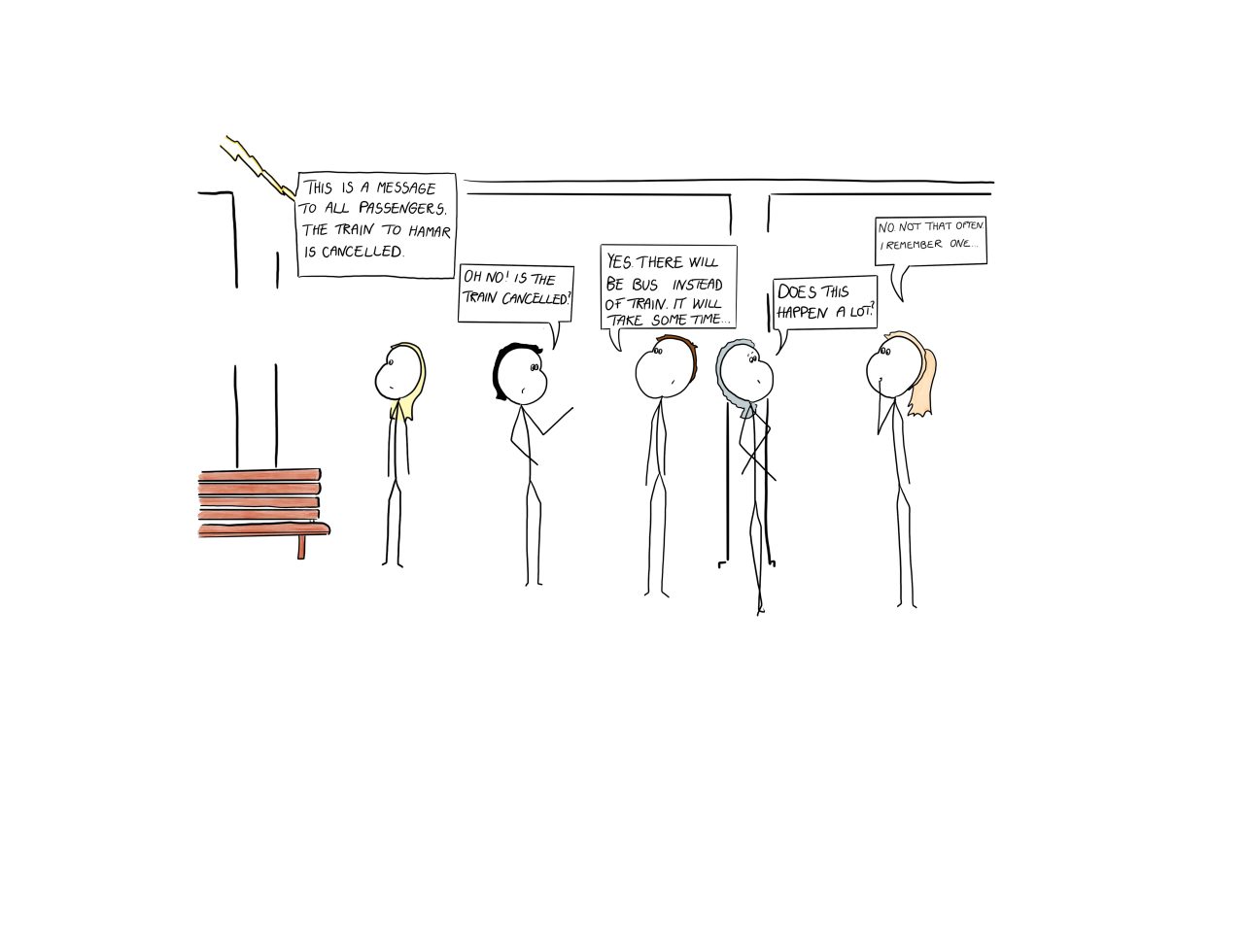
Five people on a train station. A message on the speaker announces a delay. The people start talking to each other about the delay.
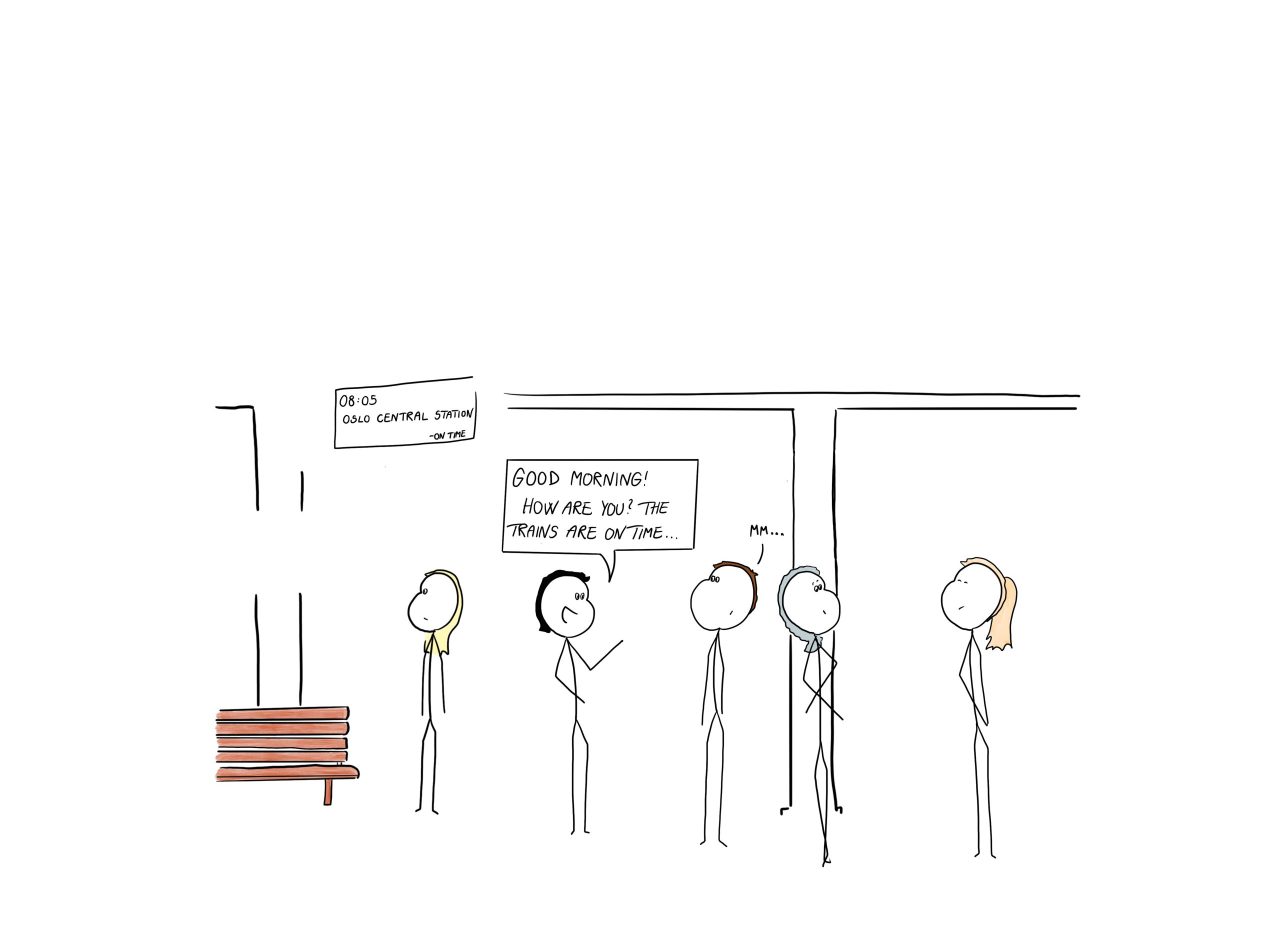
Five people in a train station. All trains are on time. One person tries to start a conversation with someone without any luck.
Sources:
- Bourrelle, Julien S.: The Social Guidebook to Norway – An illustrated introduction (2022) Drammen, Mondå forlag
- Bourrelle, Julien S.: The Social Guidebook to Norway 2 – Friendships and Relationships (2022) Drammen, Mondå forlag
Illustrations: Elise H. Kollerud




Social logic
In many countries around the world, you may naturally greet strangers and start talking for no particular reason. You end up talking for a little while.
Two people, that do not each other from before, greeting each other.